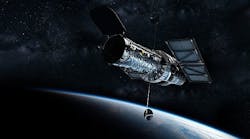Influential astrophysicists, roboticists and astronauts say that orbital construction could spark a renaissance in space science and exploration
Continue reading original article
The Intelligent Aerospace take:
December 12, 2018- Lee Billings' piece for Scientific American is worthwhile reading for anyone with an interest in satellites and space sciences. While the International Space Station and the Hubble Space Telescope have shown the ability to build and maintain large objects in space, the prospect of building a space telescope the size of an Earth-bound one is both intriguing and daunting, but the result could drive both discovery and innovation.
Related: Teledyne to provide SWIR sensor chip assemblies for the WFIRST space telescope
Related: NASA needs wide-field electro-optical instrument for future WFIRST infrared space telescope
Related: Thales Alenia Space delivers METIS instrument, heat shield for ESA Solar Orbiter
Jamie Whitney, Associate Editor
Intelligent Aerospace
Ready to make a purchase? Search the Intelligent Aerospace Buyer's Guide for companies, new products, press releases, and videos
